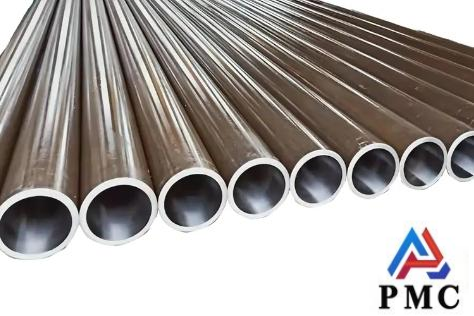
Welding Repair Requirements for Stainless Steel Welded Pipes
A stainless steel welded pipe is a pipe fabricated by joining edges of stainless steel plates or sheets through welding. These pipes offer high corrosion resistance, excellent strength, and durability, making them ideal for various industrial, architectural, and food-grade applications. Here’s a detailed breakdown of its key characteristics, types, manufacturing process, and applications.
Types of stainless steel welded pipes
Based on Construction:
1. ERW (Electric Resistance Welded) Pipes:
Made from flat-rolled steel with longitudinal welds.
Used in low to medium pressure applications.
2. EFW (Electric Fusion Welded) Pipes:
Suitable for thicker wall pipes and higher pressures.
3. Seamless vs. Welded:
Seamless pipes are used where high mechanical integrity is needed, while welded pipes are preferred for lower cost and general-purpose applications.
Welding repair requirements for stainless steel welded pipes
If stainless steel welded pipe in a specific working environment, the need for welding repair, the welding preparation should be carefully checked before, in order to ensure complete removal of defects. Welding of stainless steel tubes shall be carried out in accordance with the welding procedure as assessed in ASME Code Section IX. Welding operators or welding equipment operators performing welding shall comply with the qualification requirements of Volume IX. In addition to A1 or A2 component of the weld metal can be used for P1 material, the weld metal should be equivalent to plate P-No A-No component requirements. When the purchaser agrees, other weld metal that matches the material matrix of the material to be welded may also be used. The weld metal must be evaluated in accordance with ASME Code, Volume IX.
If a stainless steel pipe material is required to be subjected to a Charpy impact test, the weld qualification test shall also include welds, heat affected zones and Charpy impact tests of the base metal and shall be reported to the purchaser. If the stainless steel pipe material is to be normalized, quenched and tempered, thermoformed or post-weld heat treated, the steel plate and the welded steel plate for the welding procedure qualification test shall be heat treated as specified by the purchaser. In addition, the repair of the weld should be consistent with the requirements of the construction specifications of the buyer.

What is the standard for the weld of stainless steel welded pipes?
The weld standards for stainless steel welded pipes mainly focus on the appearance, size, chemical composition, mechanical properties and corrosion resistance of the welds. The following are some common standards:
1. Appearance of welds
The welds should be evenly distributed along the circumference of the pipe, without obvious welding defects such as cracks, slag inclusions, pores, undercuts, etc. The welds should be smooth and neat, without burrs and protrusions, ensuring that the outer surface of the pipe is smooth.
2. Weld size
The size of the weld (such as height, width, excess height, etc.) should meet the requirements of the manufacturing standards and be within the allowable tolerance range. Different specifications of stainless steel welded pipes have different requirements for weld size, which needs to be determined according to specific specifications.
3. Chemical composition
The chemical composition of the weld should match that of the parent material to ensure the stability of the performance of the weld joint. The content of impurity elements in the weld should comply with relevant standards to avoid adverse effects on the performance of the weld joint.
4. Mechanical properties
The weld should have certain mechanical properties, such as tensile strength, yield strength, elongation, etc., to meet the use requirements. The weld of stainless steel welded pipes for building structures should have plastic deformation properties of tensile and bending resistance.
5. Corrosion resistance
The corrosion resistance of the weld should meet the requirements of relevant standards, including resistance to corrosive media such as acid, alkali, and salt. The weld and heat-affected zone should not have a tendency to intergranular corrosion to ensure that the corrosion resistance of the weld joint is stable.
6. Nondestructive testing
Welds should be subjected to nondestructive testing, such as radiographic testing and ultrasonic testing, to check whether there are defects inside the welds. The results of nondestructive testing should meet the requirements of relevant standards and specifications to ensure the quality of welded joints.
7. Weld quality grade
Different application scenarios have different requirements for weld quality, and weld quality is usually divided into different grades. The weld quality of stainless steel welded pipes for building structures should meet the first-level requirements to ensure the quality and reliability of welded joints.
- 【Prev】 : No infomation!
- 【Next】 : The Conditions of Stainless Steel Seamless Tube Corrosion


